Contemporary sensor technology has facilitated a digital M that looks almost like its analogue predecessors: lean and slender, the new M10 represents an M that is geared entirely towards digital rangefinder photography. We talked to Stefan Daniel (Global Director Business Unit Photo), project leader Henning Rafflenbeul, product manager Jesko von Oeynhausen and designer Christoph Gredler about the ideas that stood behind the development of the M10, looking back to move forward.
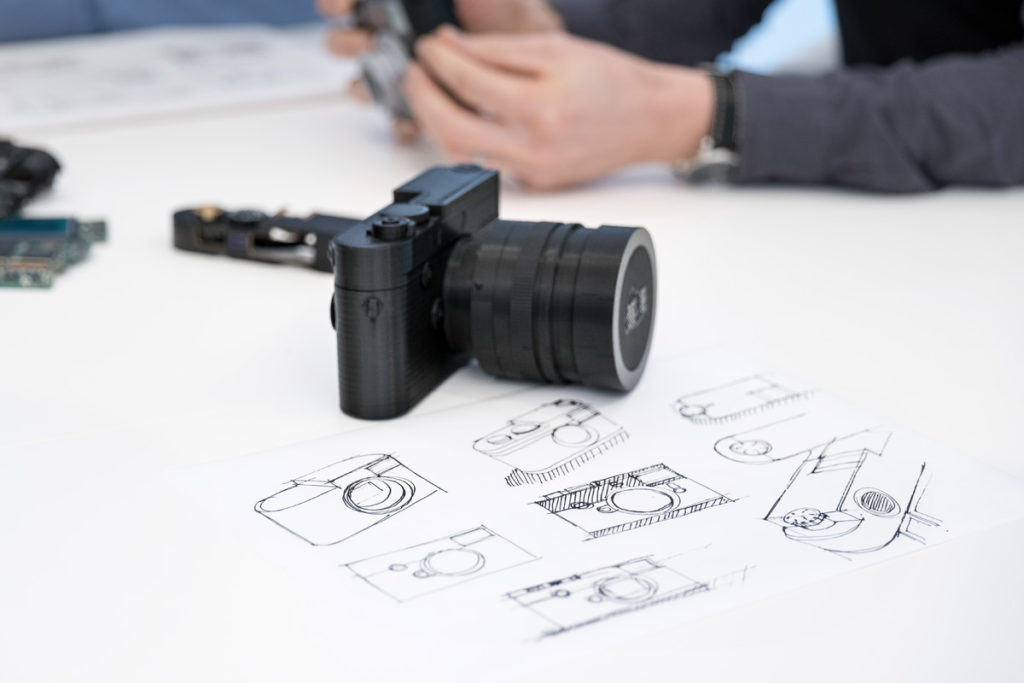
The M10 fulfils a popular wish among photographers for a return to the form factor of the analogue M. For a long time, this was thought to be impossible – and in fact the M (Typ 240) was even a tad deeper than the M9. What was it that now enabled the M10’s slimmer design?
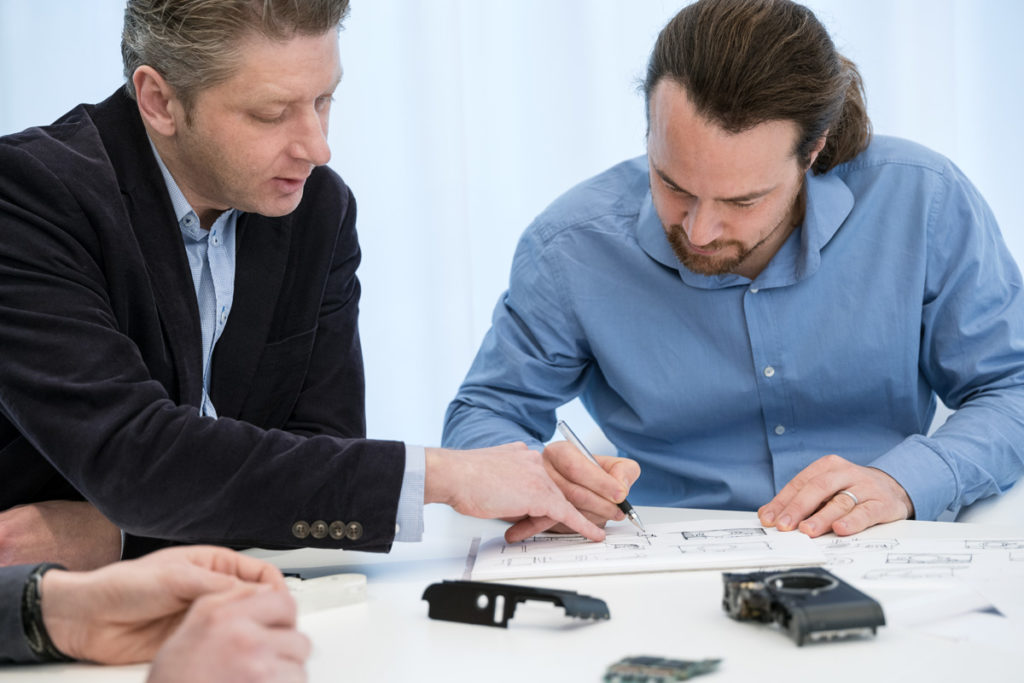 Henning Rafflenbeul: Unlike with the M (Typ 240), the construction of the M10 was restricted to the interior space of the analogue M. The flange focal distance of the M system, i.e. the 27.8mm distance between mounting flange and image plane, naturally had to be retained. Yet at the same time the performance of the camera was to be considerably increased, and new functions integrated. It was not unlike having to fit a V-8 motor under a small bonnet. We had to develop new concepts that would simultaneously facilitate the highly sensitive rangefinder settings and other micrometer-exact calibrations, as well as enable the installation of the high-performance processors for camera operation and image processing within this much smaller space.
Henning Rafflenbeul: Unlike with the M (Typ 240), the construction of the M10 was restricted to the interior space of the analogue M. The flange focal distance of the M system, i.e. the 27.8mm distance between mounting flange and image plane, naturally had to be retained. Yet at the same time the performance of the camera was to be considerably increased, and new functions integrated. It was not unlike having to fit a V-8 motor under a small bonnet. We had to develop new concepts that would simultaneously facilitate the highly sensitive rangefinder settings and other micrometer-exact calibrations, as well as enable the installation of the high-performance processors for camera operation and image processing within this much smaller space.
With the aid of computer simulations and state-of-the-art PCB technologies we were able to optimise the construction compared to the M (Typ 240) by yet another considerable margin, with the aim of making the most of the limited space. Because of its high-density electronic performance, the Any-Layer PCB technology implemented in the M10 reduced the amount of space that was required. We were also able to save space by using the highly integrated, miniaturised electronic assemblies that are now available.
In the past, the M8 with its minimally protruding bayonet had to be adjusted in order to facilitate the high-precision coupling of lens and rangefinder. Was it a challenge to now extend the lens mount even further?
Henning Rafflenbeul: Yes, it was, because the high-precision optomechanics of the rangefinder’s chain of transmission had to be entirely reconfigured. Having to adapt the construction to the limited available space prompted the improvement of the transmission between the roller-lever and the optically effective beam path of the rangefinder. The result is an overall enhanced system for considerably greater settings accuracy.
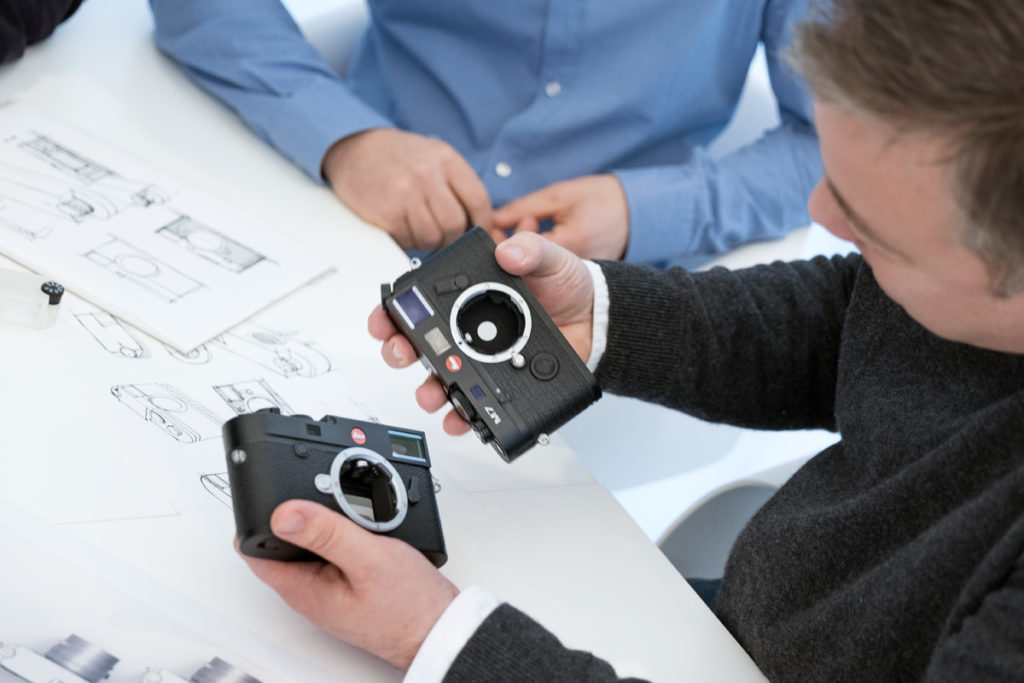 Christoph Gredler: Designing a Leica M requires a different approach from any other product. The M is the most central product of the company’s camera range. This calls for sensitivity as well as a sense of respect and responsibility towards a design tradition that has been passed down for more than 60 years. This means that the design of an M can only ever be about evolution, not revolution.
Christoph Gredler: Designing a Leica M requires a different approach from any other product. The M is the most central product of the company’s camera range. This calls for sensitivity as well as a sense of respect and responsibility towards a design tradition that has been passed down for more than 60 years. This means that the design of an M can only ever be about evolution, not revolution.
The M10 features an ISO dial in place of the film rewind lever traditionally found on analogue M cameras. Why did Leica choose a mechanical dial over a settings menu?
Jesko von Oeynhausen: It was our intention that not only the dimensions, but also the operation of the camera should reflect the origins of the M system. The process of working with an analogue M camera is a very specific experience. Unlike with fully-equipped SLR systems, the photographer sets most values in advance, in order to then entirely focus on the subject during the decisive moment. This is why we found it so important to bring back mechanical ISO control. The new position of the dial makes the camera’s appearance even more reminiscent of an analogue M, and also allows for convenient access and operation.
Christoph Gredler: The M10’s ISO dial is a great example of the camera’s overall design concept, whose guiding principle could be described as ‘the art of engineering’. The term refers to the perfect consolidation of simplicity, authenticity and precision. A return to the original dimensions of the analogue M models formed the primary basis of the design process. By and by, elements and functions were added, always ensuring that they would meld into the harmonious overall appearance of the camera. Details such as the design and positioning of the ISO dial, the expansion of the rangefinder window and the simplification of the camera’s operation were all carried out in close collaboration with construction and product management. Accessories such as the handgrip, or the thumb rest to push into the hot-shoe, were designed to seem like an integral part of the camera.

When designing settings dials, there is always the conflict between providing convenient operation on the one hand, and preventing accidental adjustments on the other. How did you solve this issue on the ISO dial of the M10?
Christoph Gredler: With the ISO dial, the greatest challenge aside from the spatial limitations was to integrate a secure locking mechanism into the control element. With the dial’s exposed position on the top-plate of the camera, the combination of the rotary-detent and locking function had to be extremely robust, but still easy to operate. The ratchet-locking mechanism makes any inadvertent adjustments impossible, while the unlocked dial lets you set the ISO value with a defined rotary detent.
Jesko von Oeynhausen: To rule out any risk of inadvertent adjustment, the ISO dial has to be pulled upwards with two fingers in a completely straight line in order to unlock. This means that unlocking it by accident – for example if the camera catches on your clothes when carrying it with the strap around your neck – is completely impossible.
Increasing the viewfinder magnification from the previous 0.68 times to 0.73 times also marks a return to the parameters of an analogue M. What was the aim behind it, and how does the new viewfinder of the M10 differ from those of previous models?
Henning Rafflenbeul: The aim of redesigning the viewfinder was to improve the optical characteristics while simultaneously adapting the construction to the more limited space of the M10’s top plate. This is why we didn’t simply adopt the optical design of previous viewfinders such as that of the M7, but instead reworked it in terms of dimensions, as well as the position of the entrance and exit pupils and the field of view. The field of view of the M10 has been increased by around 30 percent, resulting in a better overview of the scene. The eye relief of the M10, meaning the optimal distance of the eye from the viewfinder, is distinctly greater than on the M (Typ 240). Consequently the finder offers improved viewing comfort, especially for anyone who wears glasses. At the same time this enabled us to reintroduce the 0.73-times magnification.
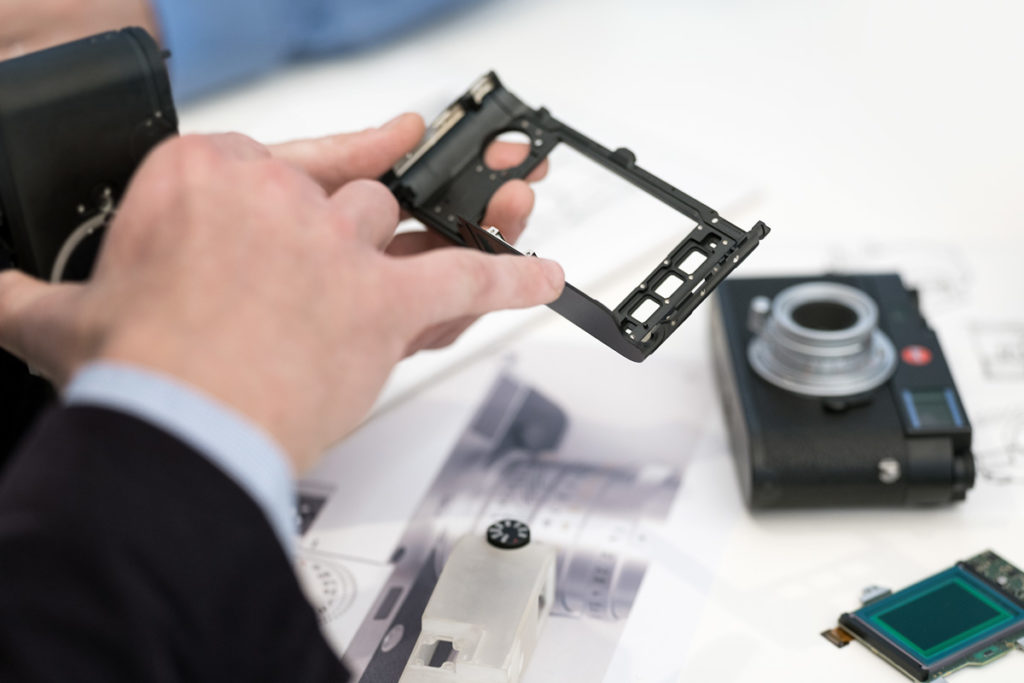 Jesko von Oeynhausen: The result is very impressive. The M10 gives the photographer a greater sense of comfort and certainty, with fewer reject images caused by a flawed focus.
Jesko von Oeynhausen: The result is very impressive. The M10 gives the photographer a greater sense of comfort and certainty, with fewer reject images caused by a flawed focus.
The sensor of the M (Typ 240) has special micro-lenses to ensure high image quality at both small and large angles of incident light. Is this also true for the sensor of the M10?
Henning Rafflenbeul: The M10’s sensor also features micro-lenses that have been specifically optimised for the optical characteristics of M lenses. This continues to ensure the best image quality within the M-lenses’ compact design.
Jesko von Oeynhausen: Also, side effects such as vignetting or colour shifts on the edges of the image have been reduced even further with the sensor of the M10.
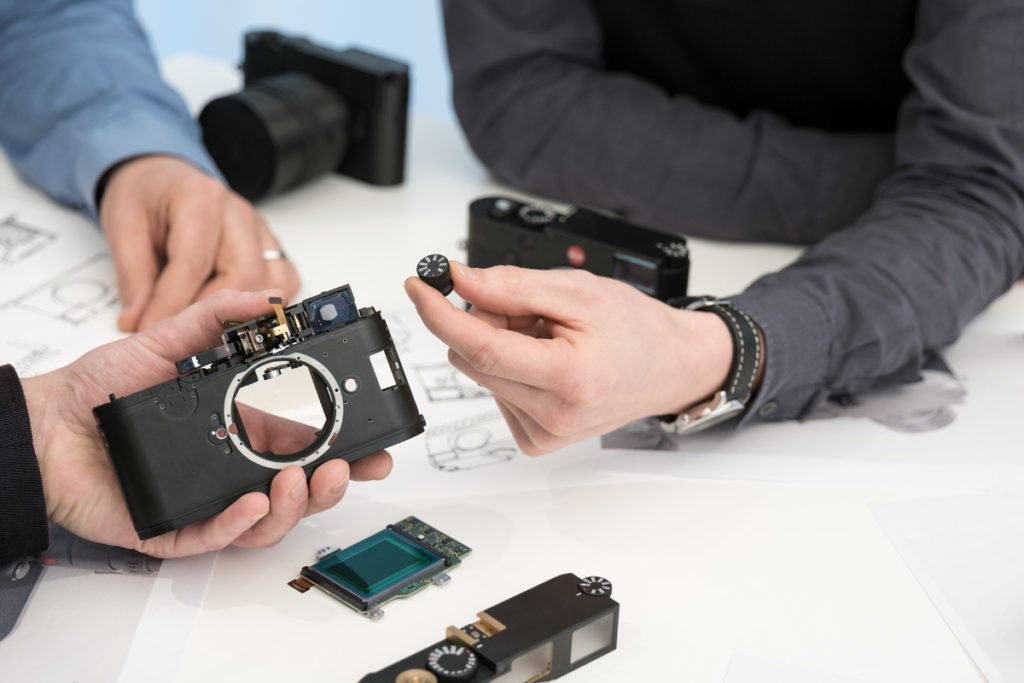
The sensor resolution has not changed from the previous model. All M cameras, as well as the S, SL and Q, feature sensor pixels of the same size (6 µm). Is this what Leica consider to be the optimal pixel size within the current sensor technology?
Stefan Daniel: 24 megapixels in full-frame format represents a well-chosen balance between resolution and the light sensitivity of the individual pixels. The M10 delivers immaculate image files even at high ISO levels, though of course every photographer has their own threshold regarding image noise. Personally, I set the auto-ISO all the way up to 6400 without any concerns that I might find the noise in one of the images distracting. This really is impressive, especially when considering that the maximum ISO of the M9 was 2500. The M10 offers an ISO range from 100 to 50,000. The ISO 100 setting represents another considerable expansion of the camera’s creative potential. Now even the fast Summilux lenses can be utilised at open aperture in many daylight situations, enabling us to take full advantage of their unique character.
The new interface for an external electronic viewfinder, first introduced in the Leica T, opens up the possibility of improving the resolution and frame rate of the viewfinder image. What role does the optional electronic viewfinder play for the M10, which on all other counts pursues the ideals of a pure rangefinder camera?
Jesko von Oeynhausen: An electronic viewfinder is a valuable addition to the M system in situations when the focal length range is to be expanded beyond 28–135 mm, or when shooting in the macro range. With the Visoflex (Typ 020), the M system has been enhanced by a viewfinder that provides a remarkably clear, large-sized image and natural colour rendition.
What motivated the decision to omit a video mode?
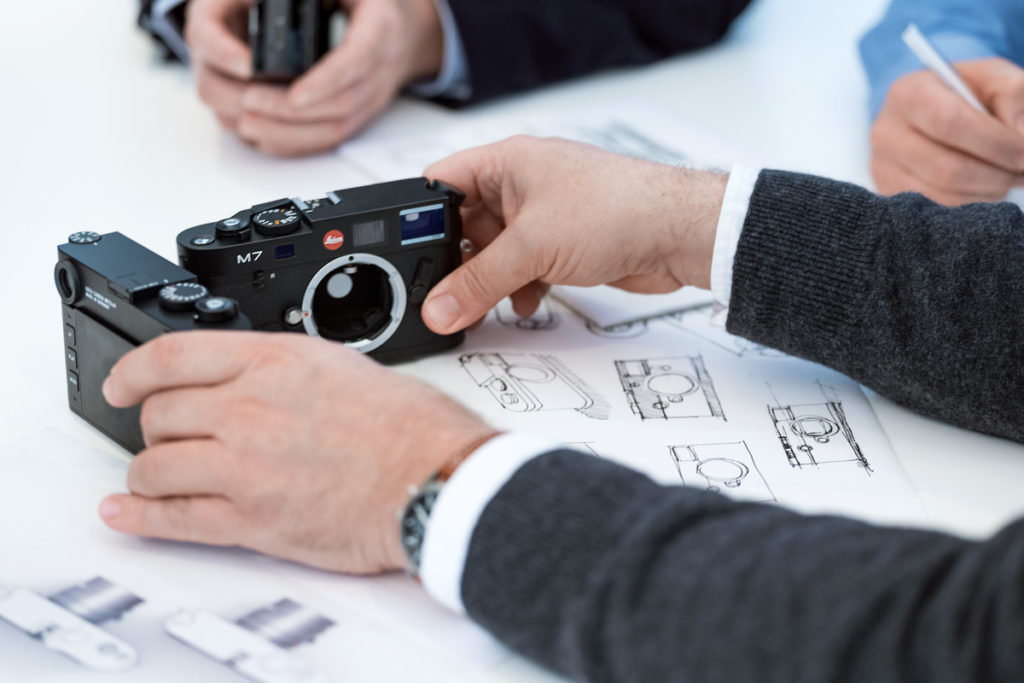 Jesko von Oeynhausen: We consciously restricted the camera’s range of functions to those that are essential to M photography. The most noticeable omission is the video function, which was only introduced to the M system with the M (Typ 240). Recording videos with an M is a very exciting application, because just like M photography, it yields results that cannot be achieved with any other system. For this reason we also continue to offer the M10’s sister models, the Leica M and M-P (Typ 240).
Jesko von Oeynhausen: We consciously restricted the camera’s range of functions to those that are essential to M photography. The most noticeable omission is the video function, which was only introduced to the M system with the M (Typ 240). Recording videos with an M is a very exciting application, because just like M photography, it yields results that cannot be achieved with any other system. For this reason we also continue to offer the M10’s sister models, the Leica M and M-P (Typ 240).
Henning Rafflenbeul: The M10 arose out of a decision to develop a camera designed entirely for rangefinder photography. A video function, and the additional demands this would have placed on the camera, would have led to compromises in terms of operation, construction and design that would not have been compatible with our goal of developing the perfect rangefinder stills camera.
The M10 does not have an interface for data exchange. Do Leica instead rely on the wireless transmission of images?
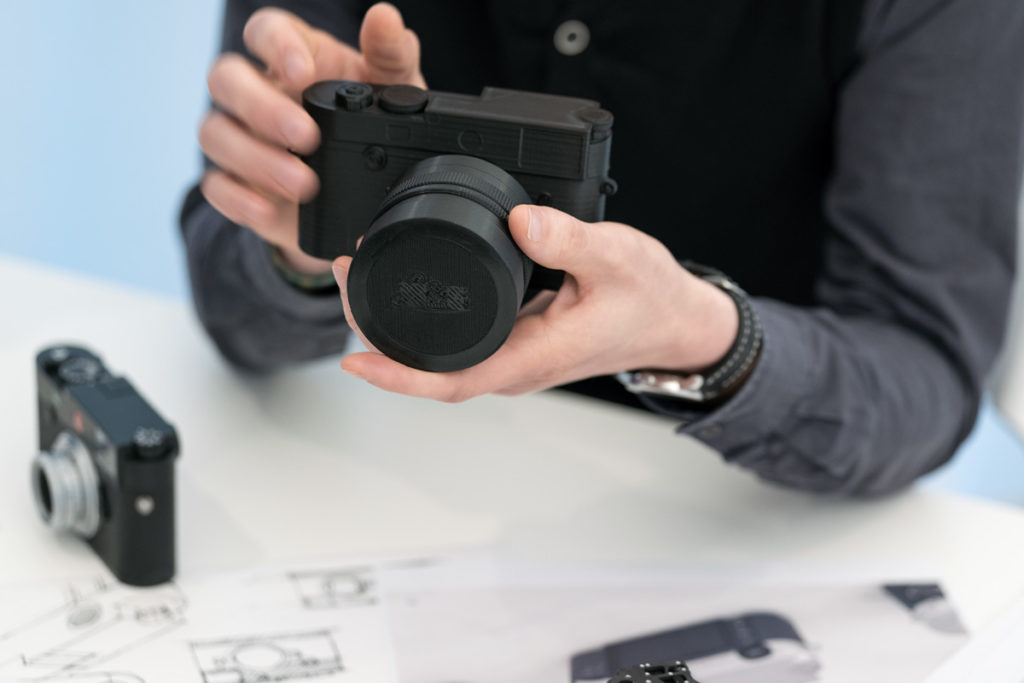
Jesko von Oeynhausen: Yes, exactly. Thanks to the WLAN interface it is finally possible to save images directly onto the iPhone and share them while you’re on the go. Streaming the live-view image and releasing the shutter via the app opens up fantastic new applications and unusual perspectives, as well as providing greater control – for example in the case of selfies, or when shooting a group photo from a tripod. However, the WLAN interface cannot as yet eliminate the need for tethered-shooting solutions in the studio. For this purpose, the M/M-P (Typ 240) with their multi-function handgrip continue to be available.
A few years ago Leica stopped using the familiar model numbers to name their cameras. The M10 now marks a return to the traditional number system. Does this imply the end of their recent naming strategy?
Stefan Daniel: The customer response over the past few years has shown a preference for a clearer differentiation between the individual M models. Type numbers can only achieve this to a limited extent, which is why Leica have decided to revert to the original system based on model numbers.
To know more about the Leica M10, please visit this link.



Comments (13)